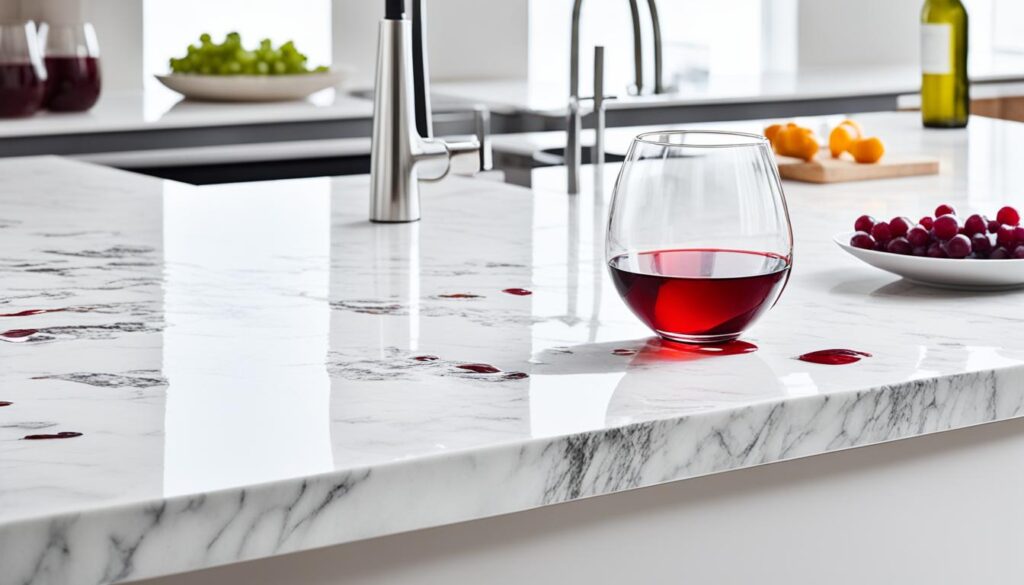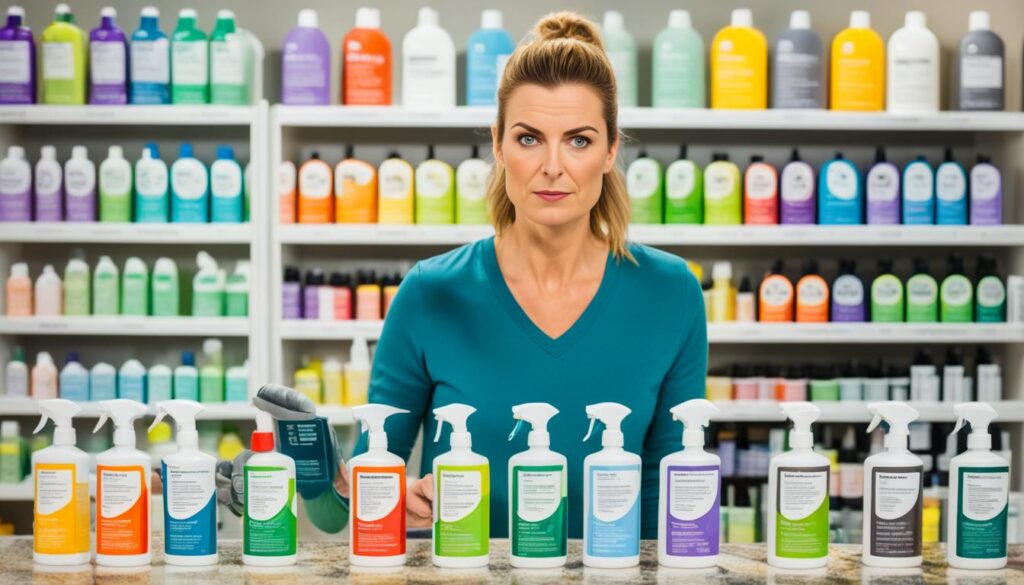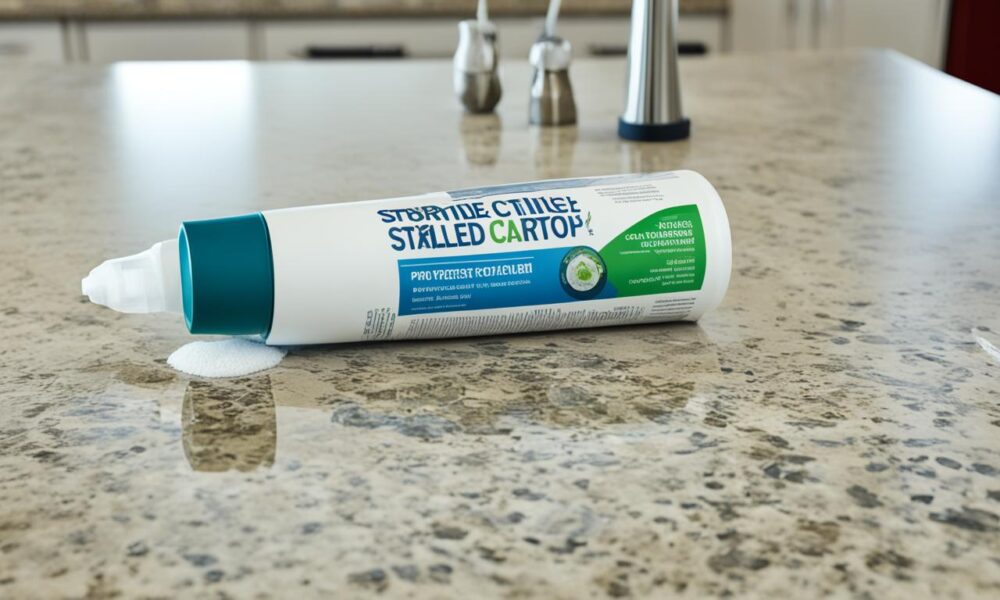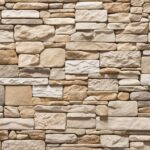Protect Your Stone Countertops from Stains Effectively
Stone countertops bring a timeless look and value to your home. However, their porous nature means they can easily stain. You should use the right cleaners and practices to take care of them. For example, sealing your countertops often helps prevent stains, keeping them beautiful1. Specially, marble and granite surfaces need careful handling to avoid damage from acid, known as etching.
Knowing how to maintain stone countertops means understanding stains versus etching. Stains soak into the stone, while etching hurts the surface because of chemical reactions. Most countertops need a good seal to keep stains away. This means applying a special sealer every 3 to 6 months. Also, it’s important to use cleaners that are pH-neutral and to quickly blot any spills2.
To keep your stone countertops looking good, follow a regular cleaning and care routine. Seal them again every 6 to 12 months, especially if they’re used a lot3.
Key Takeaways
- Properly seal and re-seal natural stone countertops to prevent staining.
- Use pH-neutral cleaners for routine cleaning.
- Immediate blotting of spills can prevent stains.
- Marble, limestone, and travertine require extra care due to their susceptibility to etching.
- Frequent resealing is necessary for high-use areas like sinks and countertops.
Understanding Stains and Etching on Stone Countertops
Stone countertops are loved for their beauty and strength. However, they can face problems like stains and etching. Knowing about these issues helps keep your countertops beautiful and long-lasting. We will explore the causes of these issues and how they differ.
What is Staining?
Stains occur when liquids soak into stone and cause discoloration4. Liquids like coffee, oils, and lotions can create stains4. Porous stones, such as marble, are more likely to get stained. It’s important to spot damage early to protect your stone’s look and quality.
What is Etching?
Etching happens when acid touches the stone, leading to corrosion and roughness4. It makes the surface look dull and feel rough5. Citrus, vinegar, and alcohol are common causes4. Marble, limestone, and travertine are especially at risk because of their calcite5.
How to Differentiate Between Stains and Etching
Stains and etching harm stone countertops but in different ways. Stains change the color without affecting texture. Etching makes the surface rough or indented5. Both require quick action. Stains need a poultice for removal, while etching may need a Marble Refinishing Kit4. Learning how to prevent these problems is crucial for countertop care.
| Type of Damage | Causes | Characteristics | Prevention |
|---|---|---|---|
| Staining | Household liquids such as coffee, oils, hand lotions | Discoloration without texture change | Proper sealing and immediate cleanup4 |
| Etching | Acidic substances including citrus products, vinegar, alcohol-based solutions | Rough or indented surface | Avoid exposure to acids, use coasters and trivets5 |
How to Prevent Stains on Your Natural Stone Countertops
To keep your natural stone countertops looking good, you need to take some steps. Using the right sealing methods and cleaning them often will help keep them safe from stains. We’ll share important advice on how to seal and take care of your stone countertops.
Sealing Your Countertops
Putting a sealer on your stone countertops is vital. Because these stones are porous, they can easily soak up liquids which may lead to stains6. It’s best to use a penetrating sealer as it does not change how the stone looks and works better6. These sealers go deep into the stone to stop liquids from getting in and causing stains.
Sealing your countertops every year can stop them from getting stains7. For example, granite needs a yearly seal to stay resistant to stains. On the other hand, marble is more porous and needs fast cleaning of any spills to prevent stains7.

Regular Maintenance
Taking care of your countertops regularly is key. Clean any spills quickly to avoid hard-to-remove stains6. Use things like mats, rugs, or coasters to keep staining agents off your stone surfaces6. Also, clean with special stone solutions and soft cloths to keep the stone perfect without scratching it6.
Part of taking care of your stone countertops includes checking and reapplying sealer when it’s needed, especially on surfaces that get used a lot. By doing these things, you can keep your countertops looking new and working well for many years.
Choosing the Right Cleaning Products for Stone Care
Caring for stone countertops means picking the right cleaners to avoid damage. It’s key to know which products are bad for stone and which are safe.
Avoiding Acidic Cleaners
Acidic cleaners like vinegar or lemon juice can etch many natural stone countertops. This especially affects marble and limestone, harmed by even weak acids8. Avoid strong chemical cleaners that strip sealants and harm the stone. Concrete countertops can also be marred by acids, resulting in ugly spots9.
Using pH Neutral Cleaners
To clean effectively, use pH-neutral cleaners meant for stone. These cleaners are free from harmful acids and bleach, protecting various stone surfaces. They keep sealants safe and prevent surface damage8.

Many brands provide products designed for stone care. DuPont Stonetech Revitalizer is favored by many for stone care. You can also use mild dish soap with water for granite countertops9. This keeps the stone clean without harmful chemicals.
Choosing the right cleaners protects your stone countertops. Using the correct products makes them look better and last longer.
Preventive Measures to Avoid Stains
Keeping stone countertops stain-free requires early action. Simple daily habits can protect these surfaces effectively.
Using Coasters and Trivets
To keep coffee, wine, or juice spills from sinking into the granite, coasters are a must10. Trivets also prevent stains and damage from hot pots and pans.
Cleaning Spills Immediately
Cleaning spills right away stops liquids from getting into the granite10. This is vital because granite can soak up water, juice, or oil through its pores10. For best cleaning methods, check out tips on keeping stone countertops looking great.
Quick action on spills from acidic foods or vinegar is key10. Acids can harm granite surfaces. Using coasters, trivets, and cleaning spills fast helps keep countertops beautiful.
Best Practices for Sealing Stone Countertops
Sealing your stone countertops is key to preventing stains and keeping them looking great longer. It’s important to know about the different sealers, how to apply them, and how often you should do it. This ensures the best protection for your countertops.
Types of Sealers
There are different sealers for various types of stone. Water-based sealants are good for stones like marble, since they’re safe for the environment and don’t smell. You should reapply them every six to twelve months11. Solvent-based sealants last longer as they go deeper into hard stones like granite. These need a new coat once every year11.
Application Tips
When applying sealer, begin by pouring it onto the stone and let it sit as the label says. Next, spread it gently with a cloth soaked in sealer and buff it dry11. It’s best to use a thin coat for full coverage. Avoid using harsh cleaners and rough scrubbing tools as they can scratch the countertop12.
Frequency of Sealing
How often you need to apply sealer depends on the stone’s type and how you use your countertops. Stones that are more porous, like certain granites, might need more than one layer for good protection11. Normally, sealing stone countertops regularly is a good idea to keep them from staining12.
If you see water spots near your sink, it’s probably time to seal again, usually once a year. A quick water test can also show if you need to reapply sealer. Just put a little water on the surface and check if it gets absorbed in less than ten minutes11.
| Sealer Type | Pros | Cons |
|---|---|---|
| Water-Based | Eco-friendly, odor-free | Requires resealing every 6-12 months |
| Solvent-Based | Durable, deeper penetration | Higher VOC count, resealing once a year |
Repairing Stains and Etching on Stone Countertops
Understanding the difference between stains and etching on stone counters is key. A poultice can draw out substances from the stone’s pores for stains13. Minor etching might be fixed with a polishing paste13. Yet, significant damage requires a stone restoration specialist’s help13.
Marble countertops are sensitive to acids like citrus, tomato sauce, and vinegar14. While sealing helps against stains, it can’t stop etching. Preventive measures are critical13. Marble, limestone, travertine, and onyx are most at risk due to their makeup14.
Acting fast on etching is crucial13. The quicker you act, the easier the repair will be13. For daily cleaning, use warm water and mild dish soap. This prevents future problems13. Professional advice is key for restoring stone finishes well13.
Avoid harsh cleaners like bleach and vinegar to prevent damage14. A stone care kit is great for keeping your countertops beautiful and long-lasting. This helps avoid acid etching and other damages14.
To fix etching, polish the surface with powder and buff it with a soft cloth13. If you have etched granite, using a clear epoxy adhesive is an option. It costs about $20-3013.
Regularly resealing natural stone countertops is wise. It should be done every few years for the best stain and etching defense14. This upkeep keeps your stone looking good and working well.
Conclusion
Learning how to properly care for natural stone is key to keeping your countertops looking amazing. Regularly using the right stone cleaner helps maintain their beauty15. Also, dusting stone floors often stops scratches and helps them last longer15. Cleaning up spills quickly is also important to avoid stains15.
Adding simple habits, like putting coasters under drinks, can save your countertops from stains15. Use trivets for hot dishes to prevent heat damage15. Sealing your countertops is crucial too. Granite might need it every 1 to 5 years16, while marble requires it at least twice a year16. These steps help keep your countertops in top shape.
Stay away from cleaners that are acidic, such as vinegar, to avoid harming the surface15. Picking suitable cleaning products and sealing stones like granite or marble is vital1516. By doing these, your stone countertops will stay beautiful for years15.
FAQ
What is Staining?
What is Etching?
How to Differentiate Between Stains and Etching?
How to Prevent Stains on Your Natural Stone Countertops?
What are the Best Practices for Sealing Stone Countertops?
What Kind of Cleaning Products Should Be Used for Stone Care?
How Often Should You Seal Stone Countertops?
How Can I Repair Stains and Etching on Stone Countertops?
Why is Immediate Spill Cleanup Important?
How Do Protective Measures Like Coasters and Trivets Help?
Source Links
- how to protect granite marble and other natural stone countertops from staining and etching
- 5 Essential Care Tips for Maintaining Your Natural Stone Countertops
- How to Care for Granite & Stone | Weiman
- Marble Stain or Etch? How to Tell The Difference – The Marble Clinic
- Natural Stone Stain Management
- Tips for protecting your Natural Stone from Stains – Architectural Surfaces
- Care & Maintenance Tips For Natural Stone Countertops | Classic Rock
- Natural Stone Care Instructions by American Olean
- Keep Your Stone Countertops Clean and Stain Free
- How to Prevent & Remove Stains from Granite Countertops | R&D
- How to Seal—and Reseal—Your Stone Kitchen Countertops
- Caring for Your Natural Stone Countertops | Coastal Stone
- Repairing Countertop Etching – Great Lakes Granite & Marble
- How to Avoid Natural Stone Acid Etching on Your Countertops
- Essential Do’s and Don’ts for Natural Stone Care | Stone and Surface Specialists
- Keep it Shining: Top Maintenance Tips for Stone Countertops – Elite Stone Fabrication



